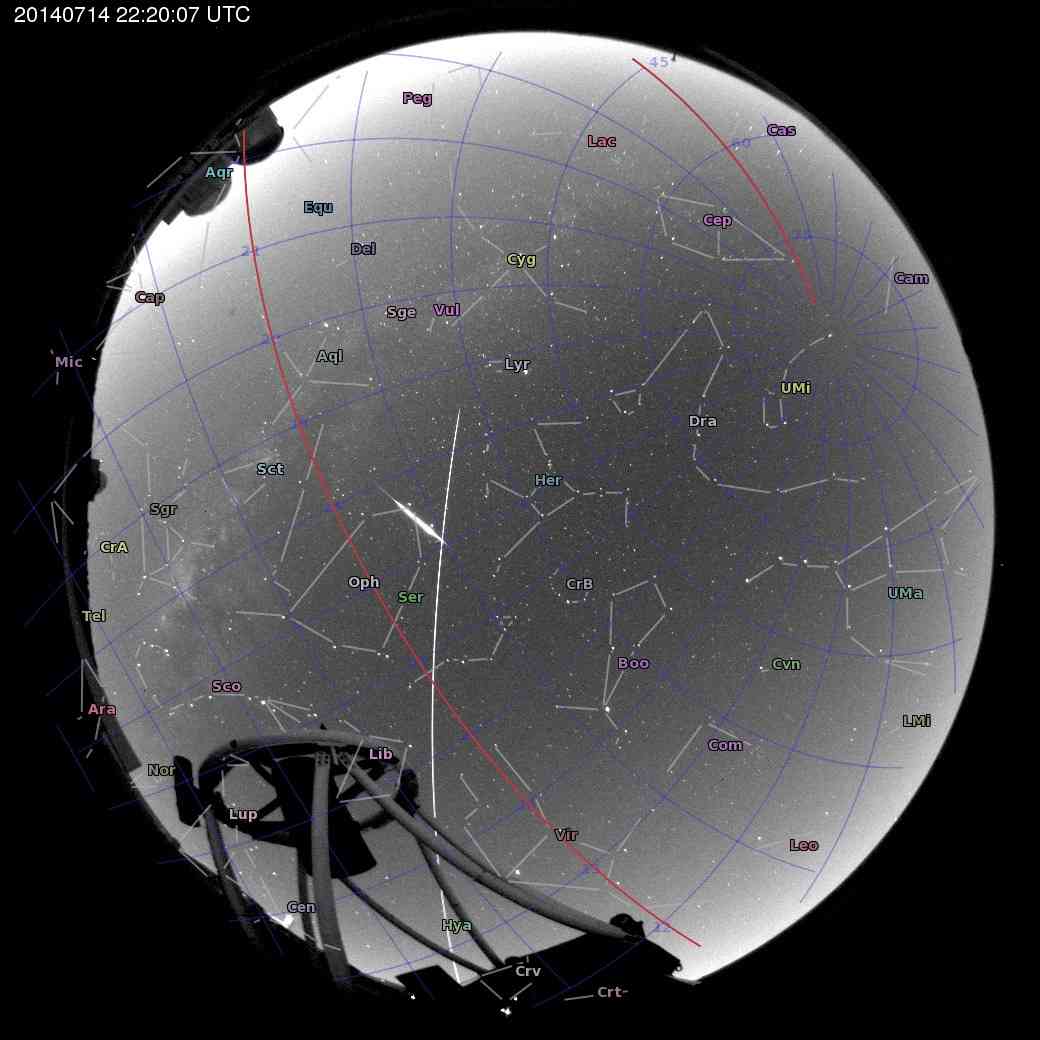 An all-sky view, taken by skycam-A earlier
this year, showing the La Palma summit horizon, the Liverpool
Telescope, a glorious night sky, a fireball, and the William
Herschel Telescope laser! Hundreds of images like these are obtained
every night by our three wide-field imagers, SkyCameras A, T and
Z. These images are posted on the LT Live Status webpage,
with the constellations and other astronomical objects conveniently
labelled, within minutes of being observed. Movies constructed from
these images showing the motion of the heavens above the summit are
posted on our Night
reports web page the following morning.
An all-sky view, taken by skycam-A earlier
this year, showing the La Palma summit horizon, the Liverpool
Telescope, a glorious night sky, a fireball, and the William
Herschel Telescope laser! Hundreds of images like these are obtained
every night by our three wide-field imagers, SkyCameras A, T and
Z. These images are posted on the LT Live Status webpage,
with the constellations and other astronomical objects conveniently
labelled, within minutes of being observed. Movies constructed from
these images showing the motion of the heavens above the summit are
posted on our Night
reports web page the following morning.
The Liverpool Telescope is delighted to announce confirmation of receipt of a grant for £250,000 per year from the U.K. Science and Technology Facilities Council (STFC). This grant will support the operation of the LT over the next two years initially (staring 1 October 2014) as part of a five year Business Plan recently endorsed by the STFC's LT Oversight Committee. The funding ensures continuing access to the telescope for a wide range of astronomers and astrophysicists from Universities and Institutes across the UK and internationally.
The LT is currently experiencing a period of rapid growth; in terms of instrument development, but also interest from its user base. Demand for telescope time from British astronomers has doubled in recent years, and continues to be similarly high from our Spanish colleagues and, indeed, from internal Liverpool John Moores University users.
LJMU's Astrophysics Research Institute and other users of the telescope are about to embark on an ambitious and exciting few years of research at the forefront of time domain astronomy, facilitated by the commissioning of two new instruments - the infrared arm of the optical-infrared imager IO, and a high-throughput SPectrometer for the Rapid Acquisition of Transients, SPRAT. IO:I will enable near-simultaneous monitoring of all manner of transients and variables in the optical and near-infrared bands. SPRAT, on the other hand, will allow for spectral classification of much fainter targets than was previously possible (down to approximately 20th magnitude) in just a few minutes. SPRAT should, for example, be a boon for researchers trying to understand the physics and chemistry of exploding stars such as novae and supernovae before these objects fade from view.
Our expectation is that both instruments will be commissioned over the next few months, ready for use by observers towards the end of this year. In all, six instruments will be available on any given night, providing imaging, spectroscopic, and polarimetric capabilities. With the recently approved funding, these instruments are now sure to be available for exploitation by astronomers in the UK and internationally for a number of years to come.
For details on how and when to apply for telescope time on the Liverpool Telescope, please consult the LT Phase 1 webpage. If you have any questions are comments about access to the LT, please don't hesitate to contact us. Our contact details are available here.


